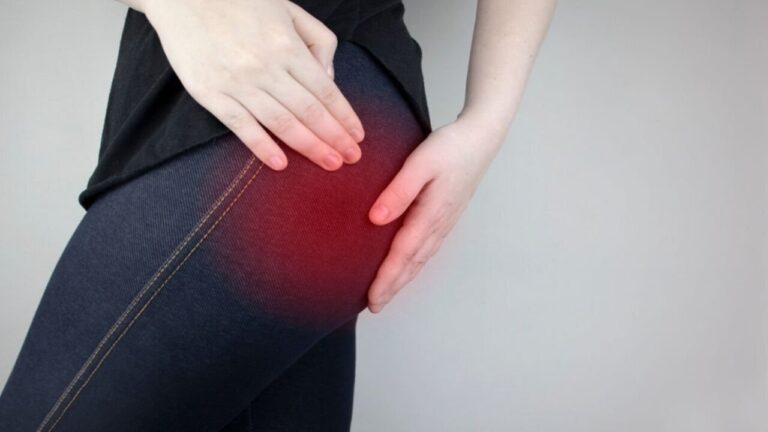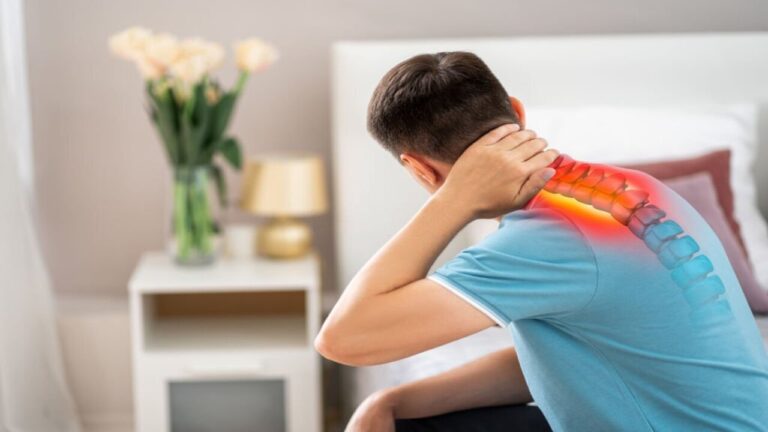
Bursitis is a painful condition when a fluid-filled sac, or bursa becomes irritated or inflamed. Bursae are present around most joints, including the elbows, knees, hips, and shoulders. Since each patient’s condition is unique, the best bursitis treatment methods differ, as they depend on the location and severity of bursitis.
Physiotherapy Treatments for Bursitis
Initial treatment for mild bursitis may include rest, icing, and an over-the-counter pain reliever. Your doctor may use steroids or antibiotics to treat an infected bursa. If the bursa is severely infected or torn, your doctor may recommend surgery, but this is very rare.
Following acute care for your bursitis, it is important to address the fundamental issue to recover your mobility and avoid reoccurrence. A physiotherapist can create a bursitis treatment plan that incorporates the following methods:
Strength Training
Your physiotherapist will assign a tailored regimen of strengthening exercises and stretches to build muscle and increase flexibility.
Massage Therapy
Physiotherapy bursitis treatment may also involve massage therapy to alleviate joint compression, relax muscles, and reduce inflammation while increasing your range of motion and flexibility.
Electrical Stimulation
Your physiotherapist may also use low-voltage electrical stimulation (ES) to treat your bursitis. They will place electrodes near the affected area to deliver electric pulses to reduce pain and stimulate healing.
Your physician will continuously review your physiotherapy program and adjust it regularly to ensure that the treatment is working.
Chiropractic Bursitis Treatments
Sometimes, bursitis occurs due to spinal and musculoskeletal misalignment. Repetitive motions and heavy lifting can lead to stress on different parts of the body. Over time, this can lead to tendonitis and joint problems like bursitis.
Chiropractic adjustments such as spinal manipulation and reflex therapy can reestablish balance throughout the body. According to the Journal of Evidence-Based Complementary Alternative Medicine, chiropractic care has been proven effective for pain reduction in various conditions.
Bursitis Signs and Symptoms
There are hundreds of bursae in your body, and most of them are near your joints. They act as cushions to protect your body from pressure and impacts, especially in joints and bones.
When a bursa is exposed to repetitive pressure, heavy loads, trauma, or infection, it collects fluid, causing redness, swelling, and pain. An inflamed bursa can hurt when moving or at rest.
How Bursitis Occurs
With the number of bursae in the human body, bursitis is an extremely common occurrence. In fact, Bursitis: Overview affirms that one out of 10,000 people reports bursitis in the knees or elbows every year.
It is especially common in people who engage in athletic activities or physical work, including:
- Gardening
- Landscaping
- Plumbing
- Carpentry
- Cleaning
- Construction
- Manufacturing
- Roofing
- Tiling
- Contact sports
In approximately one-third of cases, bursitis is due to bacterial infection. This is sometimes due to an open wound near the bursa, but the cause is not always apparent.
Diseases that cause inflammation, such as lupus, osteoarthritis, rheumatoid arthritis, and gout, can also cause bursitis.
If your bursitis stems from an infection or underlying condition, your physiotherapist will work closely with your treating physician to ensure that you receive the best bursitis treatment for your needs.
Common Types of Bursitis and Where They Occur
Bursitis can occur anywhere a bursa cushion a part of your body. However, certain types of bursitis are more common. They include:
Heel Bursitis
Per Merck Manuals, bursitis in the heel, also called Achilles tendon bursitis, occurs when a bursa that cushions the Achilles tendon and surrounding muscles, tendons, and ligaments become inflamed.
Heel bursitis can occur in the posterior bursa of the Achilles tendon, which lies behind the tendon and below the skin. Posterior Achilles tendon bursitis is usually visible as a red or swollen bump just under the surface.
Between the tendon and the bone, heel bursitis is in the anterior bursa of the Achilles tendon. Doctors may diagnose this type of heel bursitis by applying pressure to the affected area.
Knee Bursitis
A large bursa exists between your kneecap and the skin on the surface of your knee. It can become inflamed when you kneel or lean on your knee for long periods of time. Per the American Academy of Orthopedic Surgeons (AAOS), sometimes, knee bursitis occurs after a blow in an accident or contact sport. Your knee bursa could also become infected if a cut, scrape, or insect bite allows bacteria into the bursa fluid.
Knee bursitis is visible as swelling and reddening on the kneecap. The affected bursa fills with fluid as a reaction to irritation. Swelling from knee bursitis can present quickly, and you may experience pain when moving the affected knee.
Hip Bursitis
Your hip is a complicated joint with multiple bursae. Per the AAOS, it typically involves one of two areas: the trochanter or the iliopsoas.
The hip bursa most affected by bursitis is the trochanteric bursa on the outer point of your hip. With trochanteric bursitis, you may feel sharp or aching pain that spreads across the hip and down your outer thigh.
Iliopsoas bursitis occurs when the bursa on the groin side of your hip becomes inflamed. You are more likely to feel the pain in the groin area rather than the outer hip and thigh.
Elbow Bursitis
Elbow bursitis often occurs in the bursa on the outer point of the elbow. You can contract elbow bursitis by leaning on the elbow or hitting it suddenly. The irritation causes the bursa to swell, and it can usually be diagnosed visually. Elbow bursitis presents with swelling on the point of the elbow, as well as pain and sometimes redness.
Let Naples Community Injury Center Assist With Your Bursitis Treatment and Recovery
At Naples Community Injury Center, we have extensive experience working with bursitis patients. Our licensed and trained physiotherapists can create a personalized care plan with exercises, stretches, massage therapy, and other methods tailored to your needs.
Call (239) 631-5445 to schedule your first bursitis treatment.







